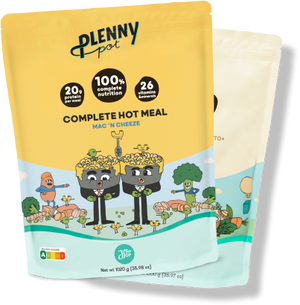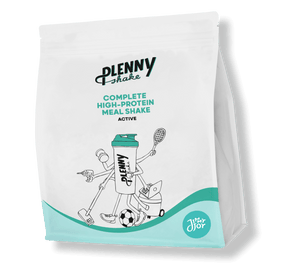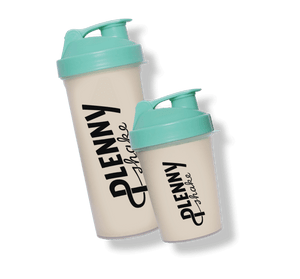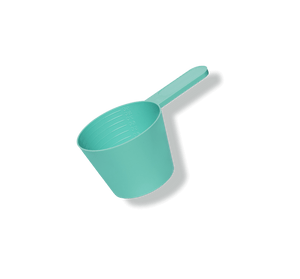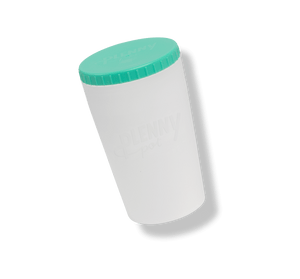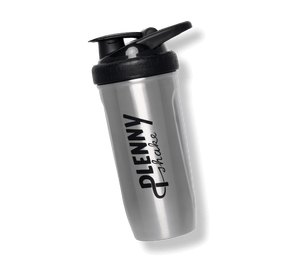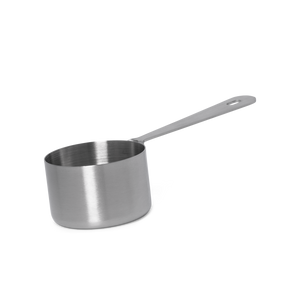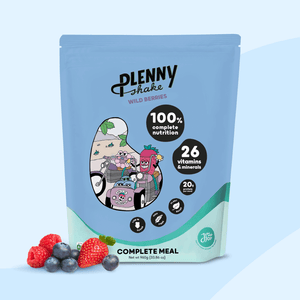
We live in a time where, thanks to digitalisation, knowledge is very easily accessible. Simply ask Google, Siri, or Alexa, and you get what you are looking for.
But do you?
When it comes to health, nutrition, and fitness, looking for answers feels like looking for the end of the rainbow like you used to do as a kid in your garden. It’s challenging and confusing.
So here's a good overview of some of the most important nutrients. We will especially look at those essential micronutrients that tend to be more critical than others, helping you learn how they work in your body and what to do to cover them accordingly through your diet and lifestyle!
What does the term essential stand for? It means that we can not synthesize these nutrients on our own and rely on external sources - food! So, if we do not eat enough of these nutrients, we will develop a deficiency. [1]
We are going to cover the following essential micronutrients:
Iron
Iron (Fe) is an essential mineral and it’s the main component of red blood cells. It transports oxygen to cells, together with hemoglobin. It is also part of important enzymes such as cytochromes. Apart from engaging in oxygen transportation, it’s vital for electron transfer, oxidase activities, and energy metabolism. [3] The human body contains about 2-4 g of iron, which is bound to hemoglobin, ferritine, myoglobin and other enzymes. [4]
There are two types of iron:
- heme iron: mainly found in animal products and red meat; generally well-absorbable.
- non-heme iron: predominantly found in plant sources, fortified foods and animal sources, and not as bioavailable as its counterpart.

How much do we need?
Adults require between 10-15 mg per day, pregnant and nursing women require more. Menstruating women need 15 mg per day, after menopause it drops to 10 mg.
How well iron is absorbed depends on the bioavailability of the foods and the host's capability of absorption.
Non-heme iron has a lower bioavailability than heme iron, but smart food combinations and keeping an eye on factors that may impair the absorption rate helps! [4] [5]
Dietary Sources
Examples of Iron-rich food per 100 g:
- Plenny Shake approximately one serving - 3.4 mg = 30% of your daily intake
- Kidney beans = 6.4 mg
- Oats = 4.4 mg
- Spinach = 3.4 mg
- Pumpkin seeds = 4.89 mg
- Beef liver = 6.89 mg
- oysters = 3.3 mg
- egg yolks = 7.2 mg
Deficiency
Iron deficiency is one of the most common dietary deficiencies found all over the world! High risk population groups are those with higher requirements (growth in infants and children, pregnancy and lactation for women), higher losses (due to menstrual blood losses in premenopausal women), and absorption impairments due to inflammation and/or infections.
So what are the symptoms of iron deficiency?
- chronic fatigue and lethargy
- headaches
- bad sleep
- hair loss and brittle nails
- lesions around the mouth
- reduced physical performance
The symptoms depend on the severity of the deficiency. [6]
How to avoid a deficiency
There are two things to keep in mind:
- Eat foods that enhance the bioavailability of iron and provide iron.
- Keep an eye on foods that impair absorption rates.
Do’s:
- Eat a large variety of iron rich foods on a daily basis.
- Enjoy vitamin C rich foods with meals - ascorbic acid increases the absorption rates of iron.
- Give yourself a hand by including meals, where you know exactly what you are getting: Jimmy Joy meals, such as the Plenny Shake, contain 3.4 mg of iron per 100 g serving - around about a quarter of your daily needs! Additionally, you will be getting a dose of all essentials in one go!
Careful:
These components have an inhibitory effect: phytates, some polyphenols and calcium. They are found in:
- the edge layers of seeds, legumes and grains
- coffee & black tea
- dairy (casein & phosphates)
- vegetables high in oxalates (rhubarb, beets, wheat germ)
If you are a vegan or vegetarian and in doubt - keep an eye on your bloodwork to ensure everything is in a safe range. Going plant based is by the way not guaranteed to get you anaemic - anyone can experience a lack in iron, depending on the circumstances! [7]
Vitamin B12
Vitamin B12 is a water-soluble essential vitamin which is part of the vitamin B-complex. It is crucial for cell division, haemostasis (red blood cell formation), DNA-synthesis and the reduction of fatty acids and amino acids such as homocysteine. Vitamin B12 is part of the so-called “cobalamins”: active compounds which have the mineral cobalt in common. Cobalamins are provided by microorganisms such as (gut) bacteria and are solely available in sensible quantities within animal products. Hence it is a critical vitamin for vegans and vegetarians. Vitamin B12 is added to foods for fortification (check out the plant based milk you use for your coffee or cereal) and is available as a supplement. [8] There are two types of added Vitamin B12 in plant-based foods: cyanocobalamin and hydroxocobalamin. These are stable forms our body can readily use and convert into the active form we need! More on this here in our article.

How much do we need?
Adults from the age of 15 are required to consume 4 µg per day. Pregnant and nursing women need a little more - 4.5µg and 5.5 µg per day.
Dietary Sources
As mentioned, animal products and produce, next to supplements and fortified foods are the best and only sources of bioactive Vitamin B12. B12-analogues do exist in fermented food such as sauerkraut and algae - though unfortunately it is not near enough to meet our needs. For omnivores it’s dairy, eggs, meat and fish. Vegans and vegetarians will have to look out for supplements and/or complete meals like our Plenny Bar! A single bar covers your daily needs for B12 and helps replenish possible depleted stores!
Deficiency
A lack or insufficient intake of B12 can lead to anaemia, neurological disruptions and psychological impairments such as fatigue and depressive moods.[8] People following plant-based diets are prone to a deficiency in this vitamin, if a supplement is not taken into consideration. But not only veggies are at risk! Omnivores who have undergone surgery where parts of the colon or stomach have been removed will have impairments in absorption. Independently of the intake of B12, gastro-intestinal diseases such as chronic gastritis, Crohn’s disease and some medical drugs can also cause a deficiency!
How to avoid a deficiency
Definitely get your blood work checked if you follow a vegetarian or vegan diet, and consider taking a supplement. This is also important if you suffer from gastro-intestinal diseases and issues. [9]
Our nutritionally complete meals are definitely for you, to help replenish and reach your daily needs of this critical vitamin - it couldn’t be easier! Need help choosing your meals and products? We have you covered with this article giving you a guide to find the right product for you!
Additionally, fortified foods such as some plant-based milk brands, plant-based yoghurt alternatives, cereals (and many more) provide added B12.
Vitamin D
The sun vitamin is a peculiar little guy! Vitamin D is a partly essential fat-soluble micronutrient. We can ingest it via nutrition and synthesise it through direct sunlight (therefore only partly essential, since we can rely on the sun too). Unfortunately, it is not possible to meet our needs solely through nutrition in a completely natural way. That’s why, next to getting enough time in the sun (now, remember, this does not mean risking a sunburn!), we often also rely on a vitamin D supplement. Vitamin D is vital for our calcium and phosphate metabolism keeping our bone mineralisation and growth in check, and our muscles cramp-free. This vitamin is also engaged in cell metabolism and growth, immune responses, inflammation reduction, and glucose metabolism. Vitamin D receptors are found in many tissues! [10]

How much do we need?
Right, this depends on how much sun-time you get. On average, we do not manage to meet our requirements, so to top up the synthesis, infants up to 12 months require 10µg per day, children and adults above 12 months of age need 20µg. 1 µg is the equivalent to 40 international units (iU) per day. Most supplements label their vitamins in iU.[11]
Dietary Sources
Unlike other vitamins and minerals, eating specific things such as leafy greens, nuts or legumes will not cover your daily requirement. Complete meals such as the Plenny Pot Creamy Cajun Pasta (one serving covers 100%) provides you with what you need. Additional sunlight is healthy on many levels, but it’s unrealistic for many to hit the daily dose, thanks to our predominantly indoor-lifestyles.
Deficiency - and how to avoid it
Infant and childhood vitamin D deficiency may lead to rachitis, an illness that leads to bone deformation, a high infection rate, low muscle tonus and ill-mineralisation of the skeletal mass. In adults, a mature deficiency may cause a demineralisation of the bone mass. This presents a high risk of osteoporosis, pain to the bones and spontaneous fractures.
Make smart choices, like incorporating complete meals such as our Jimmy Joy meals: you’ll be covering more than Vitamin D in one go, how handy! Or go for plenty of walks in the sunshine and show off some skin. Just don’t forget to apply sunscreen! [7]
If you experience symptoms that indicate a vitamin D deficiency, please contact your doctor.
Folate
Folate is a water-soluble B-vitamin, also known as Vitamin B9. It’s important for cell division, growth and the formation of genetic material such as the DNA. It’s naturally present in many foods and is a common dietary supplement (folic acid), especially for pregnant women.[12]

How much do we need?
This is a good question, since recommendations are all over the place when you compare countries. The amount of folate one needs depends on the age and the stage in life, for example pregnancy. Recommended amounts are communicated in dietary folate equivalents (DFE) and µg. 1 µg DFE = 1 µg natural folate = 0,5 µg synthetic folic acid. [13] Depending on the country or institution, daily recommendations range from 200µg (UK) to 400µg (WHO, FDA) DFE per day. The Netherlands, France, Ireland and the DACH region aim for 300 µg per day. So, why the variation? This is due to how the separate authorities and countries use different references and conjunctions to come to the conclusions around recommended values. Simply put, the science around folate leaves room for interpretation. [14]
Dietary Sources
Folate is found in plant and animal foods in addition to fortified foods and supplements. Highest levels are found in: liver (from beef - though not recommended for pregnant women), vegetables (especially leafy greens like spinach), whole grains, fruit and fruit juice (especially oranges), and nuts and legumes (peas and beans). Folic acid can also be added to foods such as cereals, grains, bread and flour.
Fun fact: The latin word “folium” stands for leaf - so eat your leafy greens, kids!
Examples of folate-rich food per 100 g:
- Plenny Shake approximately one serving - 63 µg = 30% of your daily intake
- Green peas - 159 µg
- Spinach - 141 µg
- Peanuts - 169 µg
- Egg - 74 µg
How does a folate deficiency develop?
A limited or one-sided diet, alcohol abuse, and some medication can cause a deficiency in folate - especially when needs are increased. Also, people with absorption disorders (such as celiac disease) and a mutation of the MTHFR gene may be prone to inadequate levels of folate. [12]
Folate deficiency results in growth and development disorders and in anaemia. Symptoms may include weakness, fatigue, headaches, irritability and shortness of breath. If a folate deficiency occurs during pregnancy, women are at a risk of having babies with malformations such as neural tube defects and low birth weight. This is why pregnant women are prescribed additional micronutrients - including folate! [15]
What to do, to avoid this? If you are not pregnant, not acutely planning to get pregnant and are not breastfeeding, eating a balanced diet with complete meals, plenty of vegetables, fruit, and whole grains will easily get you to the recommended daily values. Think: “eat the rainbow” and “5 a day”. Mind you: since folate is water soluble, make sure that you cook your meals gently, since being exposed to heat and water for too long will leave you with less of it!
Calcium
Calcium (Ca) is an essential mineral. In terms of stored amounts in our body, it’s the most important one: almost 100% of the calcium in our body is stored in our teeth and bones - this mineral keeps them strong. Calcium is also important for muscle function, vascular contraction and vasodilation, nerve transmission, and hormonal secretion, though only 1% of the calcium in our body is used for these jobs! Its levels are tightly regulated and do not undergo dramatic fluctuations after meals that are either high or low in calcium. Changes in calcium levels develop over time.[16]

How much do we need? Adults above the age of 19 require 1000 mg per day. 10-18 year olds need a little more (1200 mg).The daily recommended value can be reached through a balanced and healthy diet, so we do not need to rely on supplementation for this mineral. [17][18]
Dietary Sources
Good amounts of calcium can be found in dairy, green vegetables such as kale, broccoli and leafy greens, and also nuts and seeds such as hazelnuts and sesame. Water with > 150 mg calcium per litre is also considered a good calcium source!
Examples of calcium-rich foods per 100 g:
- Plenny Shake approximately one serving - 195 mg = 23% daily reference intake
- Kale - 179 mg
- Rocket salad (arugula) - 160 mg
- Broccoli - 87 mg
- Hazelnuts - 161 mg
- Parmesan - 1176 mg
As you can see: vegans and vegetarians have enough to pick from too!
Calcium and Vitamin D - All the calcium in the world wouldn’t do you any good if you don’t have adequate levels of vitamin D. This vitamin helps absorb calcium from your digestive tract. Vitamin D regulates the calcium metabolism and ensures it’s assembled into our bones!
Deficiency
If you do not consume enough calcium over time and/or have a vitamin D deficiency (therefore not absorbing enough calcium), you are at risk. Calcium deficiency does not occur short term, but over time. If you suffer from it, then it results in reduced bone mass and a higher risk for osteoporosis. Severe calcium deficiency or malabsorption is the cause of rickets (children) and osteomalacia (adult rickets). [18]
Who is more at risk? Although, frankly speaking, calcium deficiencies are not very common in healthy and young adults, an inadequate intake can be more risky for:
- Postmenopausal women, since the reduced estrogen increases bone resorption and decreases calcium absorption. Physical activity and a balanced diet with an eye on calcium can help slow this process down.
- Infants and young children suffering from malnutrition (socio-economic factors such as poverty in developing countries).
- Amenorrheic women have shown to have a negative calcium balance, either due to eating disorders, or reduced estrogen balance. This has an impact on calcium absorption. Women who suffer from exercise induced amenorrhea (especially athletes and very active women in the military) are also at risk of increased stress factors. Therefore, especially here, an adequate intake of calcium and vitamin D are essential, and supplements may be prescribed to reduce said risks of bone damage. [19]
- People who do not consume dairy (vegans, ovo-vegetarians, milk allergy, lactose intolerance) and people who do not engage in a balanced diet with plenty of vegetables are also at risk. It is important to say that not eating dairy is not automatically a risk factor: as long as you keep an eye on plant-based calcium sources! [19] [20]
You can actually look up different population groups referring to risk factors. Here’s the statistics from the osteoporosis foundation!
Magnesium
Like calcium, magnesium (Mg) is an essential mineral. The 60% of it is stored in the skeletal mass, and 30% within the muscle mass. One percent is found in the extracellular fluid, the rest is intracellular. [21]
Magnesium activates many enzymes as a cofactor for biochemical reactions, such as nucleotide, DNA and protein synthesis, muscle and nerve function, blood glucose control, and blood pressure regulation. It’s important for the mineralisation of bones, energy production, nerve impulse conduction, muscle contraction, and a healthy heart rhythm. [22]

Recommended Intake
How much you need depends on age and sex - but also on factors leading to a higher nutrient extraction and metabolic rate such as pregnancy, growth, competitive sports, and health status. 300-400 mg per day is recommended for healthy adolescents and adults. [23]
Magnesium-rich foods
People following a balanced and fibre-rich diet shouldn’t have an issue hitting their magnesium needs. Fibre-rich foods are especially great sources.
Examples of magnesium-rich foods per 100 g:
- Plenny Shake approximately one serving - 75 mg = 20% daily reference intake
- Spinach = 62 mg
- Banana = 30 mg
- Kidney beans = 150 mg
- Pumpkin seeds = 285 mg
- Oats = 121 mg [24]
The list goes on - eating a balanced diet really will keep you safe, though when for whatever reasons you can not reach your needs naturally, supplementation and/or fortified foods may be an option to talk to your GP about. Chemists and drugstores sell all sorts of Mg supplements and for healthy individuals, having a little too much Mg won’t be detrimental - it just may send you to the loo. Nevertheless, hypermagnesemia can be a serious condition if you suffer from impaired renal function or kidney failure. [25]
Magnesium deficiency.
Symptoms of low Mg are at the worst: impairments to heart and muscle functions, muscle weakness and cramps. There are a few groups of people who may need a little more magnesium, or who tend to be at risk of becoming deficient. These are:
- people following fad/restrictive diets such as Keto, strict low carb, low calorie or low fat diets.
- people suffering from alcoholism, renal illnesses and diabetes (higher Mg excretion/losses)
- people with high levels of stress, pregnant women, the elderly, and competitive athletes (including a high loss of electrolytes through sweat)
- people with gastro-intestinal illnesses (reduced absorption). [26]
How can Jimmy Joy help you meet your daily micronutrient requirements without the hassle?
There's no easier way to get your daily (micro)nutrients than with Plenny meals. Guaranteed. Let’s, for example, take a look at our Plenny Shake:
One serving of 95 g contains:
|
Iron |
23% |
3.2 mg |
|
Vitamin B12 |
128% |
3.2 µg |
|
Vitamin D |
100% |
5 µg |
|
Folic acid |
30% |
60 µg |
|
Calcium |
23% |
185 mg |
|
Magnesium |
20% |
75 mg |
% of the daily reference intake for vitamins and minerals. We also refer to the intake of an average adult (8400kJ/2000 kcal).
Plenny meals come in different shapes, forms, sizes, and flavours - there's definitely something you'll like! Have it delivered to your home and enjoy 175 health benefits with just one meal. From €1,59!
Personal note from a registered nutritionist and nutrition scientist:
You are doing great - simply by keeping your eyes open, reading this article and reaching out to learn.
Have your health status regularly checked up, especially when you enter new situations in lifestyle and habits.
Eat the rainbow, and don’t avoid food groups or macronutrients.
Jimmy Joy’s Plenny meals are very well balanced, nutritious and delicious and can easily replace regular meals, when you are in a rush or feel uninspired!
Thank you for reading!
- Holly Wilkinson Bsc Nutrition Science | Nutritionist & Personal Trainer
____________________________________________________________
Sources:
- Kent-Jones, Douglas W. , Weininger, Jean , Carpenter, Kenneth and Truswell, A. Stewart. "Human nutrition". Encyclopedia Britannica, 13 Feb. 2020, https://www.britannica.com/science/human-nutrition. Accessed 14 June 2021.
- Fact Sheets - Malnutrition (Who.int, 2020) <https://www.who.int/news-room/fact-sheets/detail/malnutrition> accessed 13 May 2021
- Scientific Opinion On Dietary Reference Values For Iron (Efsa.europa.eu, 2015) <https://www.efsa.europa.eu/sites/default/files/consultation/150526.pdf> accessed 13 May 2021
- DACH-Referenzwerte Für Die Nährstoffzufuhr (5th edn, Umschau 2013)
- Office Of Dietary Supplements - Iron (Ods.od.nih.gov, 2021) <https://ods.od.nih.gov/factsheets/Iron-HealthProfessional/> accessed 13 May 2021
- McLean E, Cogswell M, Egli I, Wojdyla D, de Benoist B. Worldwide prevalence of anaemia, WHO Vitamin and Mineral Nutrition Information System, 1993-2005. Public Health Nutr. 2009;12(4):444-454. doi:10.1017/S1368980008002401
- Lehermayr D, Demel D, and Schirmer D, 'Eisenmangel' (Netdoktor.at, 2015) <https://www.netdoktor.at/krankheit/eisenmangel-7343> accessed 13 May 2021
- Office Of Dietary Supplements - Vitamin B12 (Ods.od.nih.gov) <https://ods.od.nih.gov/factsheets/VitaminB12-HealthProfessional/> accessed 13 May 2021
- 'Neuer Referenzwert Für Die Vitamin-B<Sub>12</Sub>-Zufuhr' (dge.de, 2019) <https://www.dge.de/presse/pm/neuer-referenzwert-fuer-die-vitamin-b12-zufuhr/> accessed 13 May 2021
- 'Office Of Dietary Supplements - Vitamin D' (Ods.od.nih.gov, 2021) <https://ods.od.nih.gov/factsheets/VitaminD-HealthProfessional/> accessed 13 May 2021
- 'Vitamin D' (dge.de) <https://www.dge.de/wissenschaft/referenzwerte/vitamin-d/> accessed 13 May 2021
- 'Office Of Dietary Supplements - Folate' (Ods.od.nih.gov, 2021) <https://ods.od.nih.gov/factsheets/Folate-Consumer/> accessed 13 May 2021
- 'Folat' (dge.de, 2021) <https://www.dge.de/wissenschaft/referenzwerte/folat/?L=0> accessed 13 May 2021
- 'Revised D-A-CH Intake Recommendations For Folate: How Much Is Needed?' (nature.com, 2014) <https://www.nature.com/articles/ejcn201445> accessed 13 May 2021
- 'Ausgewählte Fragen Und Antworten Zu Folat' (dge.de, 2018) <https://www.dge.de/wissenschaft/weitere-publikationen/faqs/folat/?L=0#mangel> accessed 13 May 2021
- 'Office Of Dietary Supplements - Calcium' (Ods.od.nih.gov, 2021) <https://ods.od.nih.gov/factsheets/Calcium-HealthProfessional/> accessed 13 May 2021
- 'Calcium' (dge.de, 2021) <https://www.dge.de/wissenschaft/referenzwerte/calcium/> accessed 13 May 2021
- 'New Reference Values For Calcium' (Karger.com, 2013) <https://www.karger.com/Article/Pdf/354482> accessed 13 May 2021
- Nattiv A, 'Stress Fractures And Bone Health In Track And Field Athletes' (2000) 3 Journal of Science and Medicine in Sport
- Committee to Review Dietary Reference Intakes for Vitamin D and Calcium, Food and Nutrition Board, Institute of Medicine. Dietary Reference Intakes for Calcium and Vitamin D. Washington, DC: National Academy Press, 2010.
- Referenzwerte Für Die Nährstoffzufuhr; Magnesium (5th edn, Umschau Braus 2001), pages 221-222.
- Rude RK. Magnesium. In: Ross AC, Caballero B, Cousins RJ, Tucker KL, Ziegler TR, eds. Modern Nutrition in Health and Disease. 11th ed. Baltimore, Mass: Lippincott Williams & Wilkins; 2012:159-75.
- 'Office Of Dietary Supplements - Magnesium' (Ods.od.nih.gov, 2021) <https://ods.od.nih.gov/factsheets/Magnesium-HealthProfessional/#en1> accessed 13 May 2021
- U.S. Department of Agriculture, Agricultural Research Service. FoodData Central, 2019.
- Musso CG. Magnesium metabolism in health and disease. Int Urol Nephrol 2009;41:357-62.
- Schuchardt JP, Hahn A. Intestinal Absorption and Factors Influencing Bioavailability of Magnesium - An Update. Curr Nutr Food Sci. 2017 Nov; 13(4): 260–278. Published online 2017 Nov. doi: 10.2174/1573401313666170427162740.

 Everything You Need In One Meal
Everything You Need In One Meal
 Stay Full For 3-5 Hours
Stay Full For 3-5 Hours




















 Product added to cart
Product added to cart



